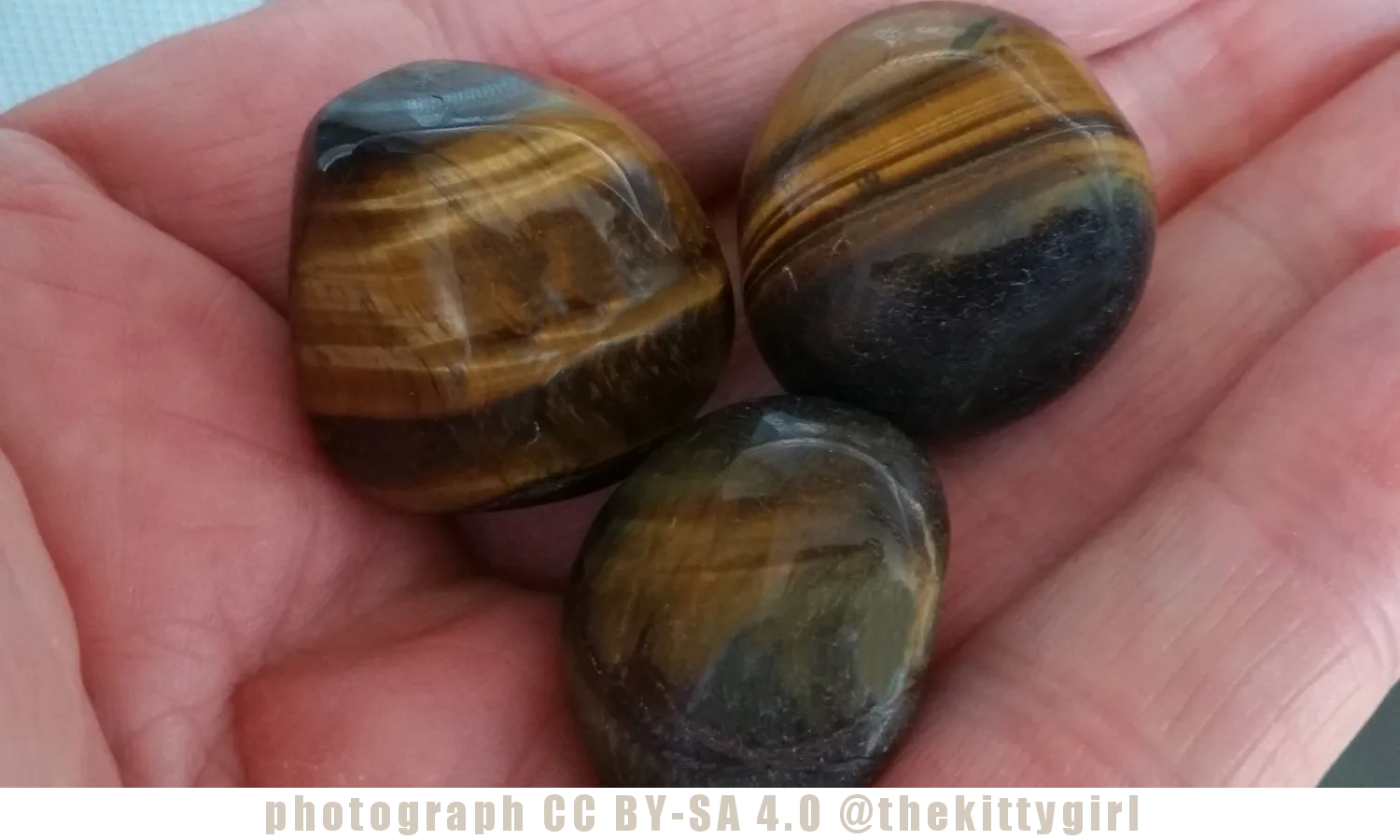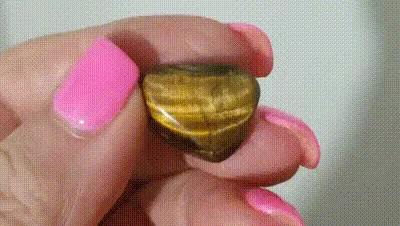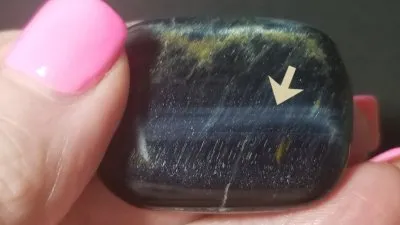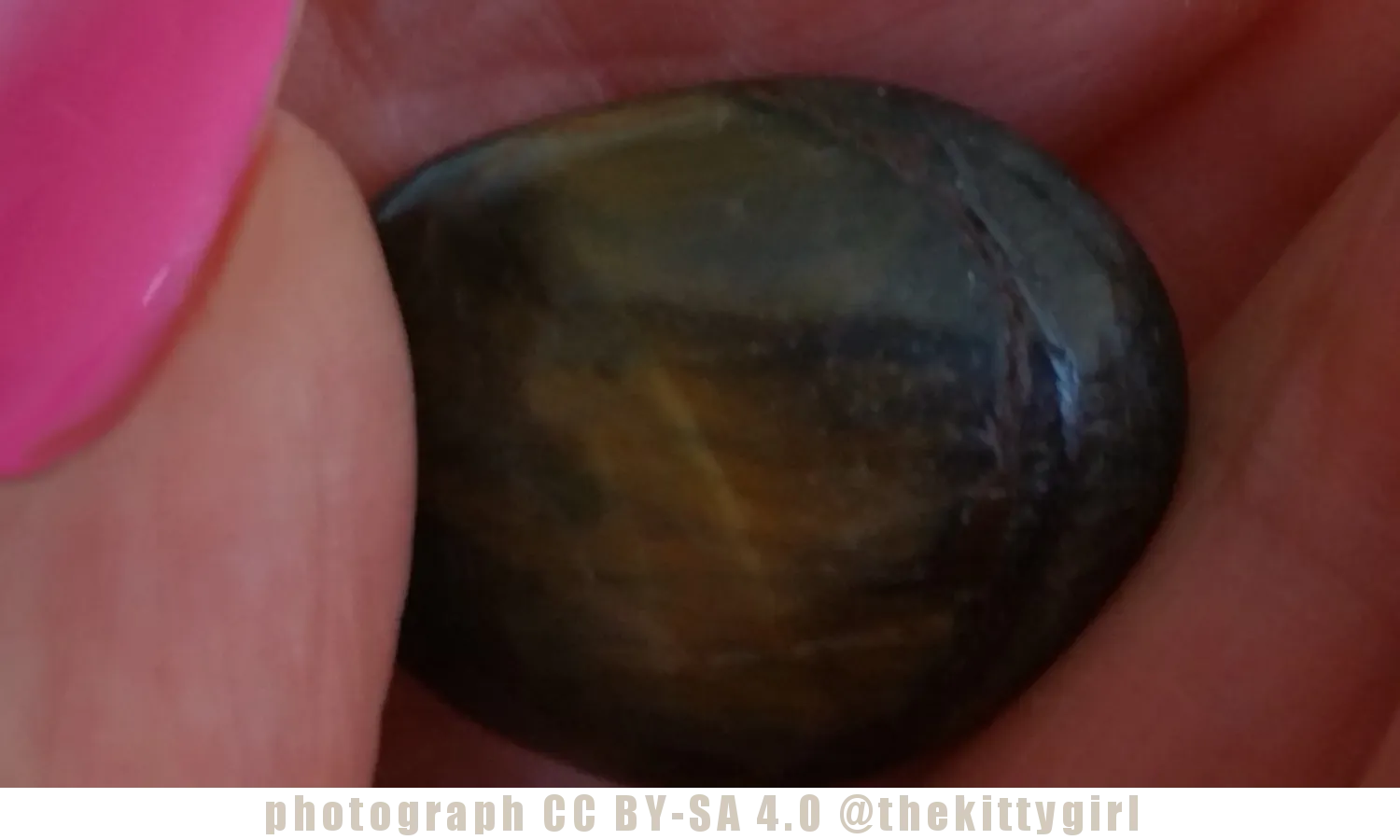It takes so long for crystals and rocks to form, most of us aren't privy to the process. Perhaps if you visited a cave as a child and then went back later in life, you might remember a once-small stalactite is now a bit larger hanging from the roof of the cave. That's about the only way we can see these geological structures actually forming slowly, over time.
Without that first-hand knowledge, we can only surmise how some crystals and rocks might have formed. Sometimes we will be correct, and sometimes we might be mistaken. Life is, after all, a learning process for all of mankind. As long as I have been studying crystals and rocks, I've always heard of one particular theory of how Tiger's Eye might have been formed, which has been widely accepted by the geological community. But, this longtime belief has been challenged with another theory that is equally plausible. Continue reading for more info!

Tiger's Eye is an amazing piece of work by Mother Nature. It appears as alternating bands of gold/orange and brown/black striations in one rock. It is very pretty! Not only does it look lovely when being held in a still, unmoving position, but it really seems to spring to life when slightly rotated as the lines seem to move, magically!
In a very similar manner, when a Tiger's Eye stone is rocked back-and-forth, the lines appear to 'move' but it is only an optical illusion. What is actually happening is light is being reflected first off one row of crystals within the rock, and then another. The puzzle has been figuring out exactly how these different rows of crystals form.

The alternate explanation, proposed in 2003, is that rows of silica crystals grow though a "crack-seal vein-filling process." [2] The way I interpret this phrase is that crystals form inside cracks in a vein of other silica material, thus creating the appearance of rows of crystals with slightly different orientation. Thus, when light strikes one row, it isn't striking adjacent rows, and when the rock is rotated, the reflected light shifts to other rows, creating the illusion of movement. [2]

As happens in nature sometimes, a single stone with both Hawk's Eye and Tiger's Eye can be found, such as the one shown in the photo below. The Tiger's Eye portion is to the left, while the Hawk's Eye portion is to the right. Having both Tiger's Eye and Hawk's Eye in the same stone seems — at least in my amateur understanding of geology — to lend more credence to the former, more established, explanation of the formation of these stones. I say this because Crocidolite is naturally a bluish color, therefore Hawk's Eye would exist where the replacement by silica happens in a pristine environment, where Tiger's Eye might form where the silica is stained by iron or other impurities nearby. [3]

Tiger's Eye falls into the category of 'semi-precious' stones (as opposed to the 'precious' category of rarer diamonds, rubies, sapphires, and emeralds) and are frequently featured in pieces of jewelry. The hardness of the silica lends the stones to be popular in rings and bracelets as well as necklaces and earrings. I have also seen jewelry in shops, both online and offline, made for men and looks quite nice set in a men's ring!
In metaphysical circles, it is said that the 'energy' of Tiger's Eye lends itself to vibrations of protection and security. It is purported to be beneficial to those who need to feel the need to be empowered, as if the eye of the namesake tiger is accompanying them. It has been suggested that Roman soldiers carried the stone into battle, to fortify their courage and bravery. [5]
Do you have any Tiger's Eye, either a stone or a piece of jewelry? If so, let us know in the comments!
SOURCES 1 Wikipedia: Lenticular printing 2 MinDat.org: Tiger's Eye 3 Minerals.net: Tiger's Eye 4 MyCrystals.com: Tiger's Eye 5 Wikipedia.org: Tiger's Eye






21-Oct-2021
Return from Tiger's Eye to 𝕜𝕚𝕥𝕥𝕪's Web3 Blog


